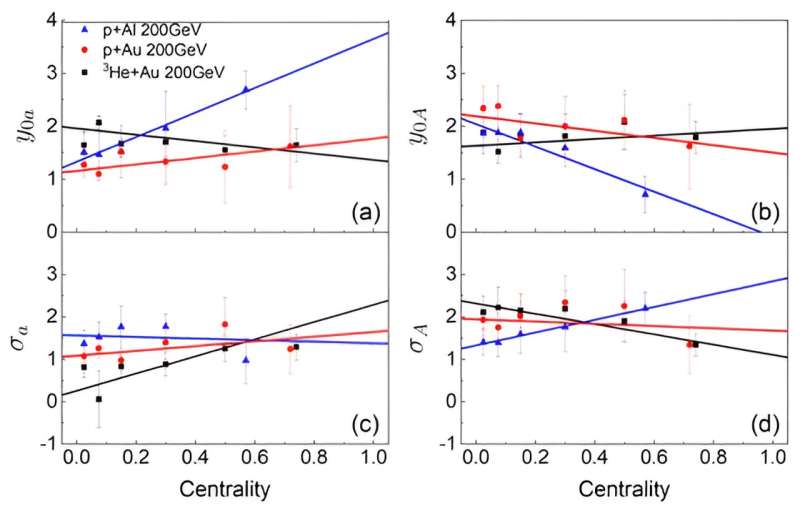This article has been reviewed according to Science X's editorial process and policies. Editors have highlighted the following attributes while ensuring the content's credibility:
fact-checked
proofread
Study unveils new insights into asymmetric particle collisions

A study has been published in Nuclear Science and Techniques, by researchers led by Prof. Hua Zheng from Shaanxi Normal University, heralding a significant breakthrough in high-energy particle physics. This study sheds new light on the behavior of particles in high-energy collisions, an area of research integral to deepening our understanding of the universe's origins.
In this comprehensive study, the researchers implemented the Tsallis thermodynamics framework, utilizing the Tsallis distribution—a sophisticated extension of the Boltzmann-Gibbs distribution—to analyze the transverse momentum spectrum of particles in high-energy collisions.
This innovative method considers particles detected in experiments as being produced by fireballs, which adhere to the Tsallis distribution, thereby providing a more detailed and nuanced understanding of particle dynamics in high-energy collision environments.
Focusing on asymmetric collision systems, specifically p+Al, p+Au, and 3He+Au at 200 GeV, the team leveraged the fireball model rooted in Tsallis thermodynamics. This model proved effective in fitting the experimental data from these complex collision systems. A key aspect of the study was examining the total multiplicities of charged particles, particularly their relationship with the centrality of the collisions.
The research also highlighted the significant impact of data quality, especially in terms of pseudo-rapidity distributions, on the overall findings.
Further, the study delved deeply into the variations in fireball model parameters, analyzing how these parameters change with both the centrality and the size of the collision systems. This approach uncovered the intricate and complex dynamics characteristic of asymmetric collisions, contributing significantly to the field of high-energy particle physics.
This study's findings confirm that the fireball model with Tsallis thermodynamics can be a universal framework to describe the pseudo-rapidity distribution of charged particles produced in asymmetric collision systems.
The success of this model in fitting experimental data paves the way for more detailed studies into the complex dynamics of high-energy particle collisions. These insights are not only significant for theoretical physics but also have practical implications in particle accelerator experiments and the search for new elements and particles physics.
The continued exploration of these complex systems will deepen our understanding of the universe's fundamental processes.
More information: Jun-Qi Tao et al, Pseudo-rapidity distributions of charged particles in asymmetric collisions using Tsallis thermodynamics, Nuclear Science and Techniques (2023). DOI: 10.1007/s41365-023-01334-9
Provided by TranSpread




















